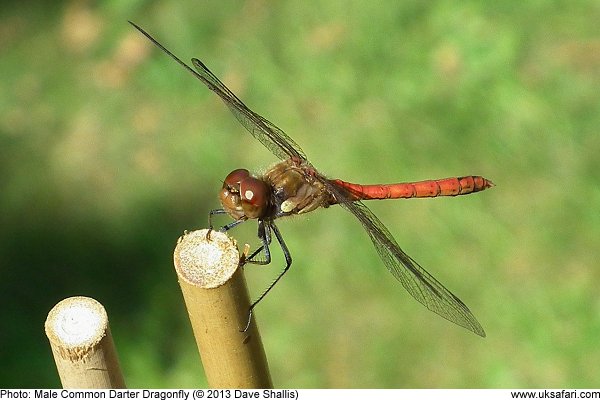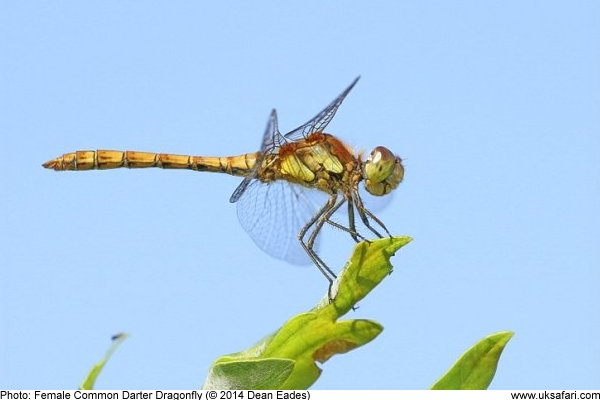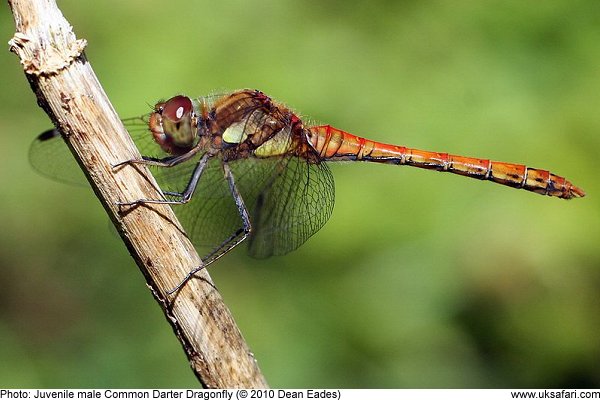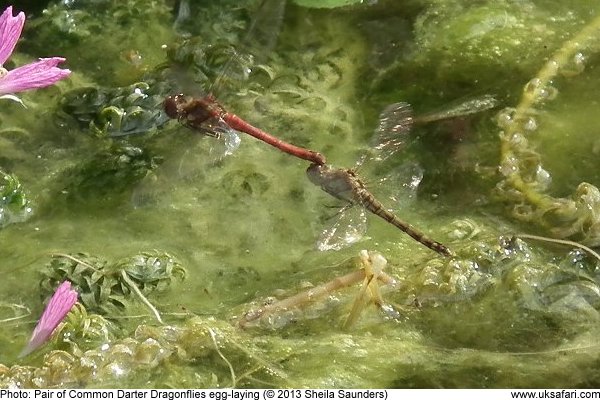 Quick Facts
Quick Facts
Scientific name: Sympetrum striolatum
Size: Body length up to 45mm. Wingspan approx 58mm
Distribution: Found throughout most of the UK but absent from a few areas of Scotland
Months seen: June to November
Habitat: Open ponds, lakes, rivers and ditches
Food: Flying invertebrates
Special features: The male Common Darters have a bright red-orange body. They look similar to Ruddy Darters, but the ruddy darter has a more tapered abdomen. The male Common Darters also have some yellow patches on the sides of the thorax. Juvenile males start out looking similar to the females, with a pale coloured abdomen and brownish thorax. As time passes the red-orange abdominal colour develops.
Female Common Darters are a golden brown colour. Older females are a more grey-brown colour.
The legs of both the males and females have a thin yellow stripe along the sides.
On warm, sunny days you'll see Common Darter Dragonflies perching on bankside vegetation. On cooler days you may find them resting on the ground trying to catch the warmth of the sun.
 Related Pages
Related Pages

 Popular Pages
Popular Pages
Amphibians, Bats, Badgers, Beetles, Birds, Birds of Prey, Bumble Bees, Butterflies, Caterpillars, Creepy-Crawlies, Deadly Spiders, Dolphins, Dragonflies, E-Postcards, False Widow Spiders, Free Newsletter, Frogs, Fungi, Garden Spiders, Glow-Worms, Grey Squirrels, Hedgehogs, House Spiders, Ladybirds, Mammals, Marine Mammals, Moths, Owls, Reptiles, Spiders, Toads, Trees, Wildlife Hospitals
Copyright © 2020 G. Bradley UK Safari. All rights reserved | About Us | Links | Contributors


 Common Darter Dragonflies
Common Darter Dragonflies





